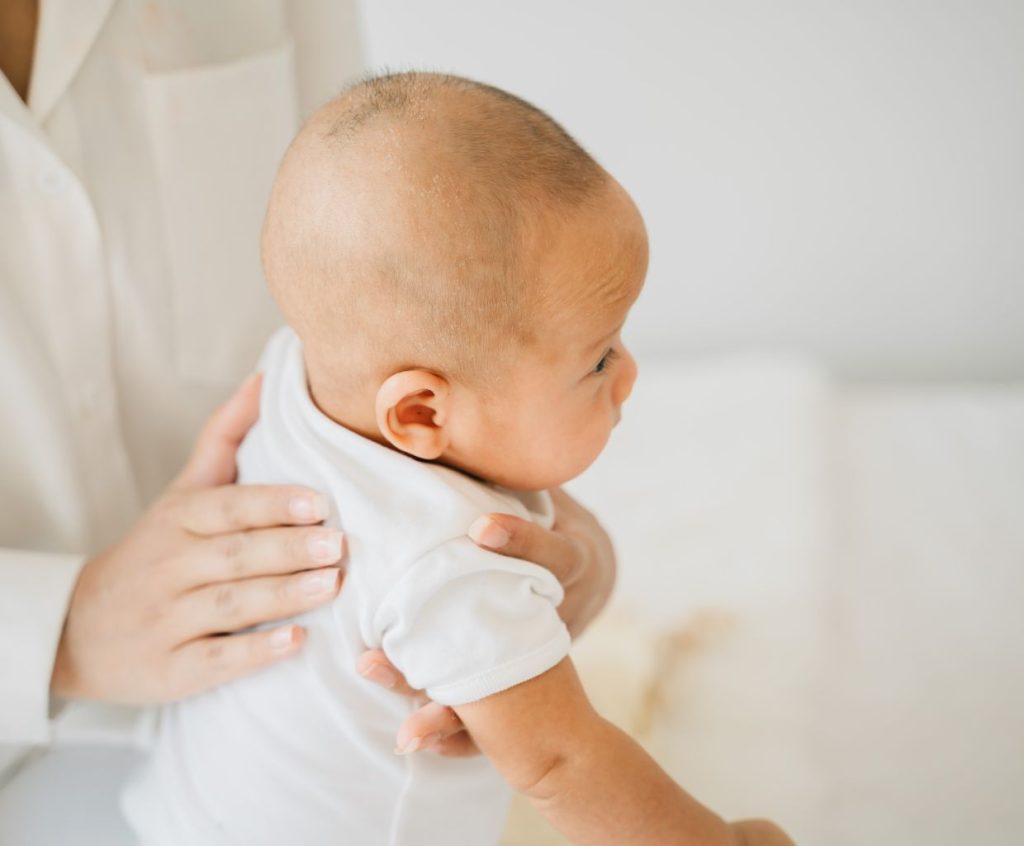Burping Your Baby: Discover the 3 Best Techniques for a Happy, Gas-Free Infant
Whether you choose to breastfeed or formula-feed, burping your Baby is essential. As an adult, you probably know that feeling when you eat something delicious and can’t finish your plate. You’re stuffed and ready to burst, but some leftovers remain on your plate.
And so you try to eat it all up, but of course, that only makes it worse—you feel like your stomach will explode. That’s probably the worst feeling in the world. But don’t worry—your Baby doesn’t have to experience that!
Burping Your Baby
When a baby drinks milk, he will swallow some air bubbles, which need to come back up. Unlike adults, a baby’s burp usually comes with some milk, called spit-up. Spit-up can be messy, especially if you’re not ready for it. It can make some uncles reconsider their will to be a father in the future, but trust me, everyone can adapt to it. It is not pretty, but part of a parent’s life.
Letting a baby burp on his own time is not advisable because you cannot predict when or how messy his burp will be. It’s easier (cleaner) for you to help him burp because you can prepare yourself with burping clothes.
Burping Your Baby – Gassy Babies
In addition to making life easier and cleaner for yourself, it’s more comfortable for the Baby to get those gas bubbles out with a loud burp! The other option is to let the air slowly wind through his gastrointestinal system and finally come out as a fart. “Gassy” babies cry a lot because they are uncomfortable, so take a few minutes to burp your Baby – it will be the only time you are thrilled with his belches.
The pediatrician may recommend simethicone drops for a gassy baby who won’t eat because his belly is full of air (Mylicon). Simethicone causes tiny bubbles to pop and join into more giant bubbles. The more giant bubbles can then rise as a burp. Simethicone is believed to have no side effects.
Some babies will burp with the simplest pat on the back. Other babies need more work to entice the air to come back out. There are three common ways to hold a baby to burp him, and I will present them to you.
1. Over the shoulder
The most familiar way to burp a baby is to put his head over your shoulder (facing back) and gently rub or pat his back.
Sometimes, it helps to squat up and down a little, so it helps jiggle the air bubbles up. Be sure to place a burp cloth over your shoulder so that the wipe cloth will soak up the spit when the burp comes.
2. Burping Your Baby – sitting on your lap
Another way to burp a baby is to sit him on your lap. Support his head up with your hand; this is easiest if you form the letter “C” with your thumb and index finger and place the C-shape under his chin.
Rub or gently pat his back until the burp comes out. Drape a burp cloth over your hand to soak up the spit. You may even wish to place a lapcloth over your lap.
3. Lying on your lap

A burp can come within a minute after eating or take up to 10 minutes. It’s worth experimenting with different positions to get that air bubble out. The air will come out one way or another. Sometimes, a burp in his belly for a long time will produce a large amount of spit – very messy and scary, too, because it is almost as if he is vomiting.
Burping Your Baby – Summary
There are lots of great ways to burp your Baby. Here’s what you need to know:
- Change position: Try putting your Baby on their back, and then gently pat your Baby’s back in a single spot. If that doesn’t work, try holding them upright or even sitting up yourself (as long as it’s safe).
- Give them something to suck on: Sucking on a pacifier can help relieve gas, so give one a try!
- Try burping in different positions: Some babies prefer being held upright while being burped—others like it when they’re lying flat on their backs with their heads slightly propped up. Experiment with different positions until you find one that works best for both of you!
If you’ve tried all three methods and they still aren’t burping, it’s time for an alternative approach: giving them a little bit of water or juice from an eyedropper (don’t make it too strong). This will help them swallow more air than usual, which will eventually lead to the production of a burp. If it doesn’t work after a few minutes, try giving them another eyedropper full of water or juice.
If you’re still having trouble, it’s time to call a doctor. Your child may have an infection that could be causing the problem, or they may need some medication for their reflux.



